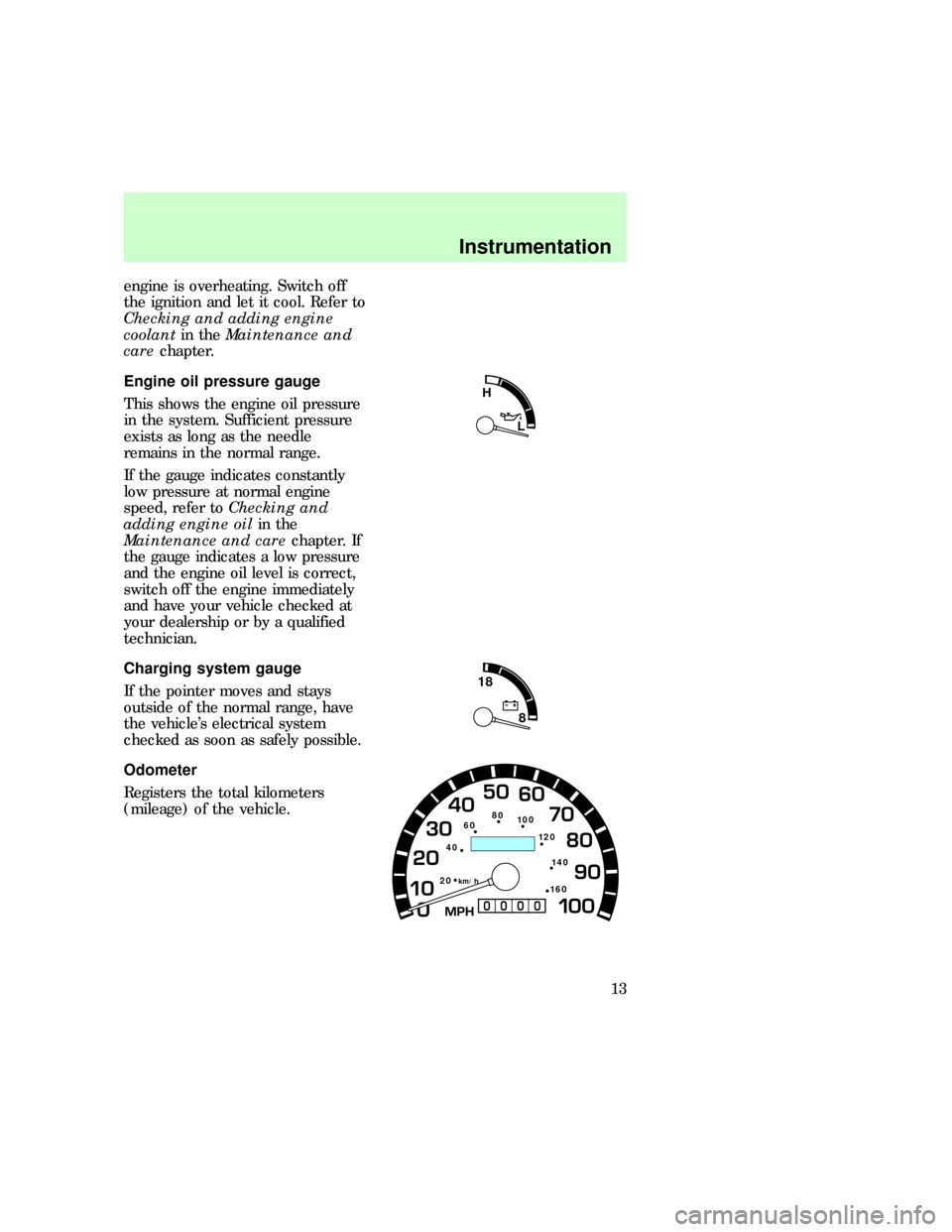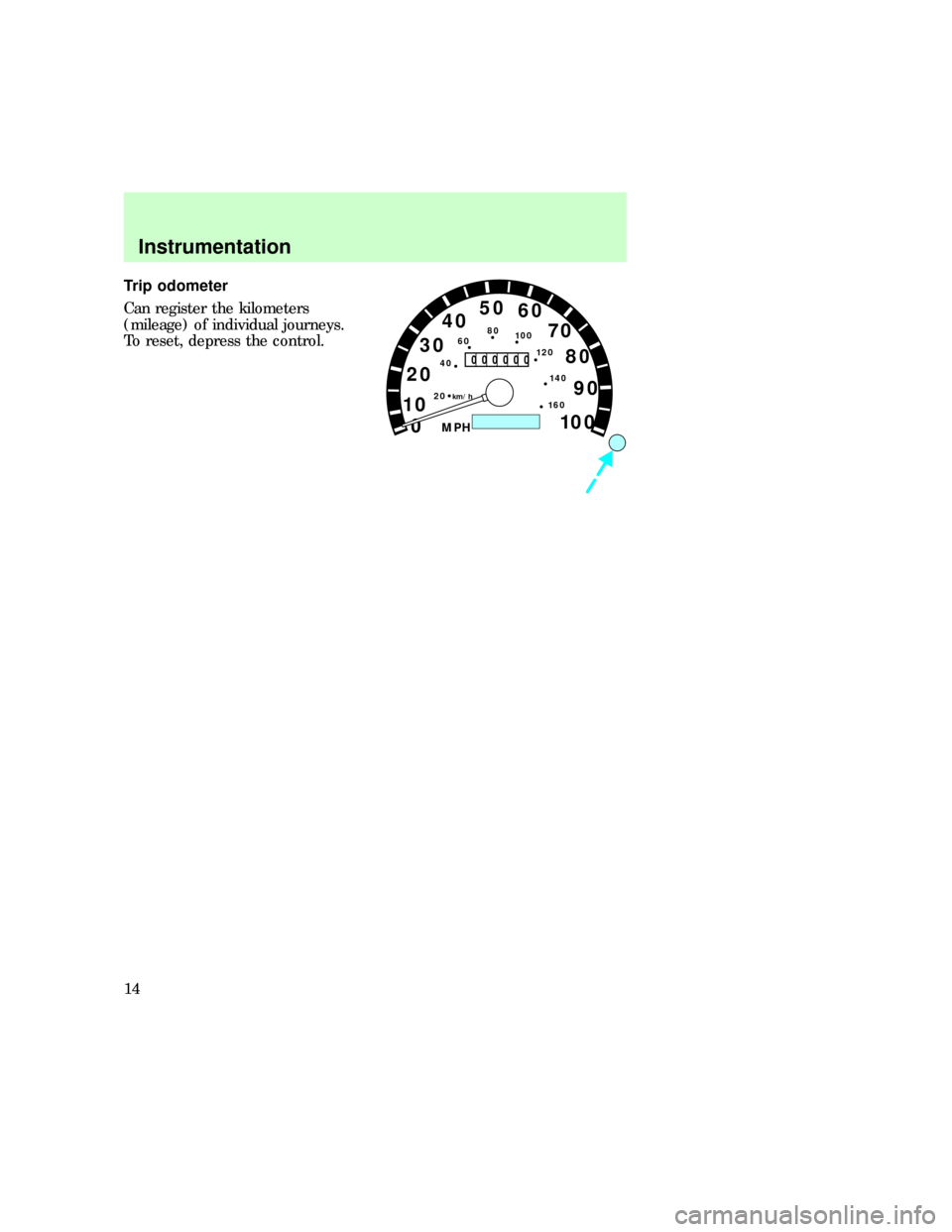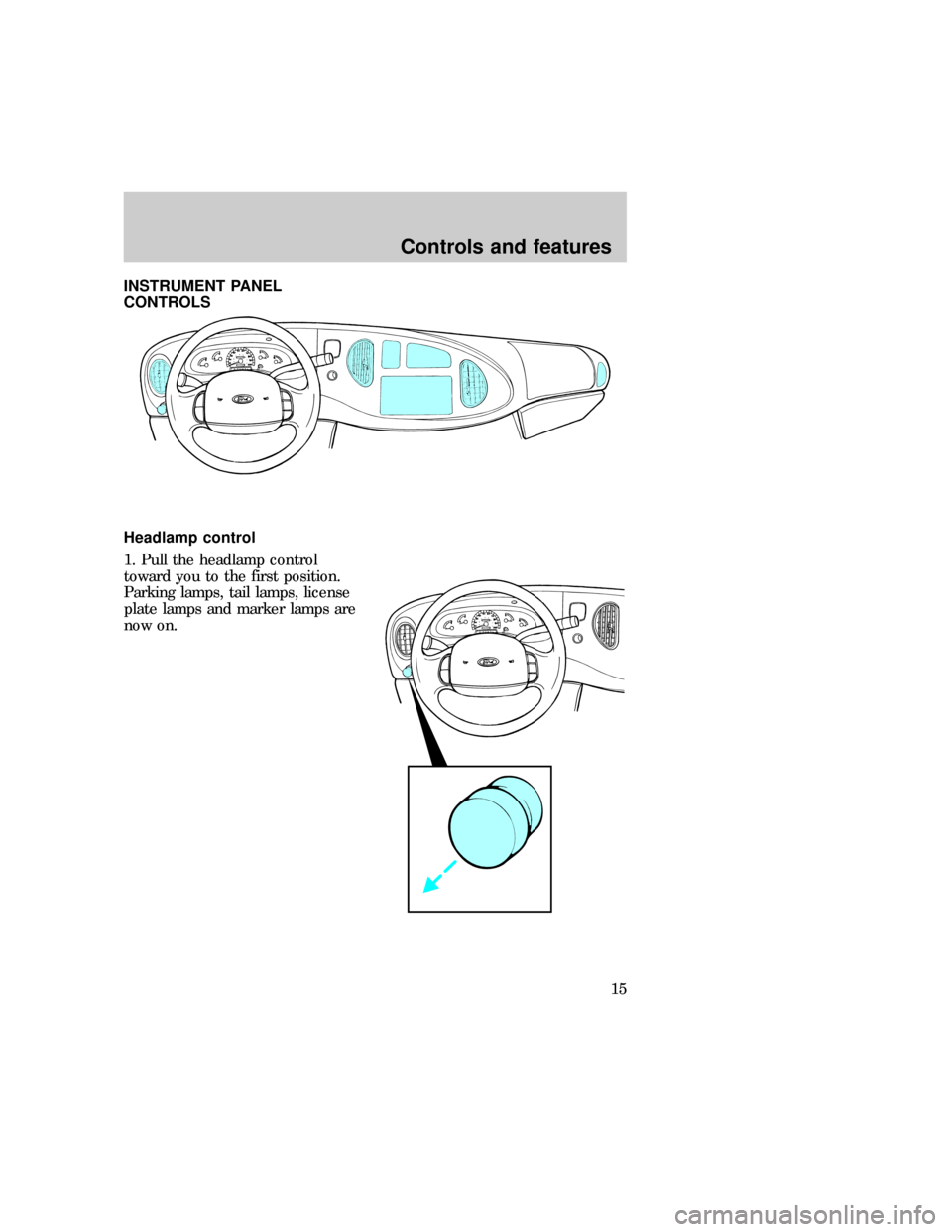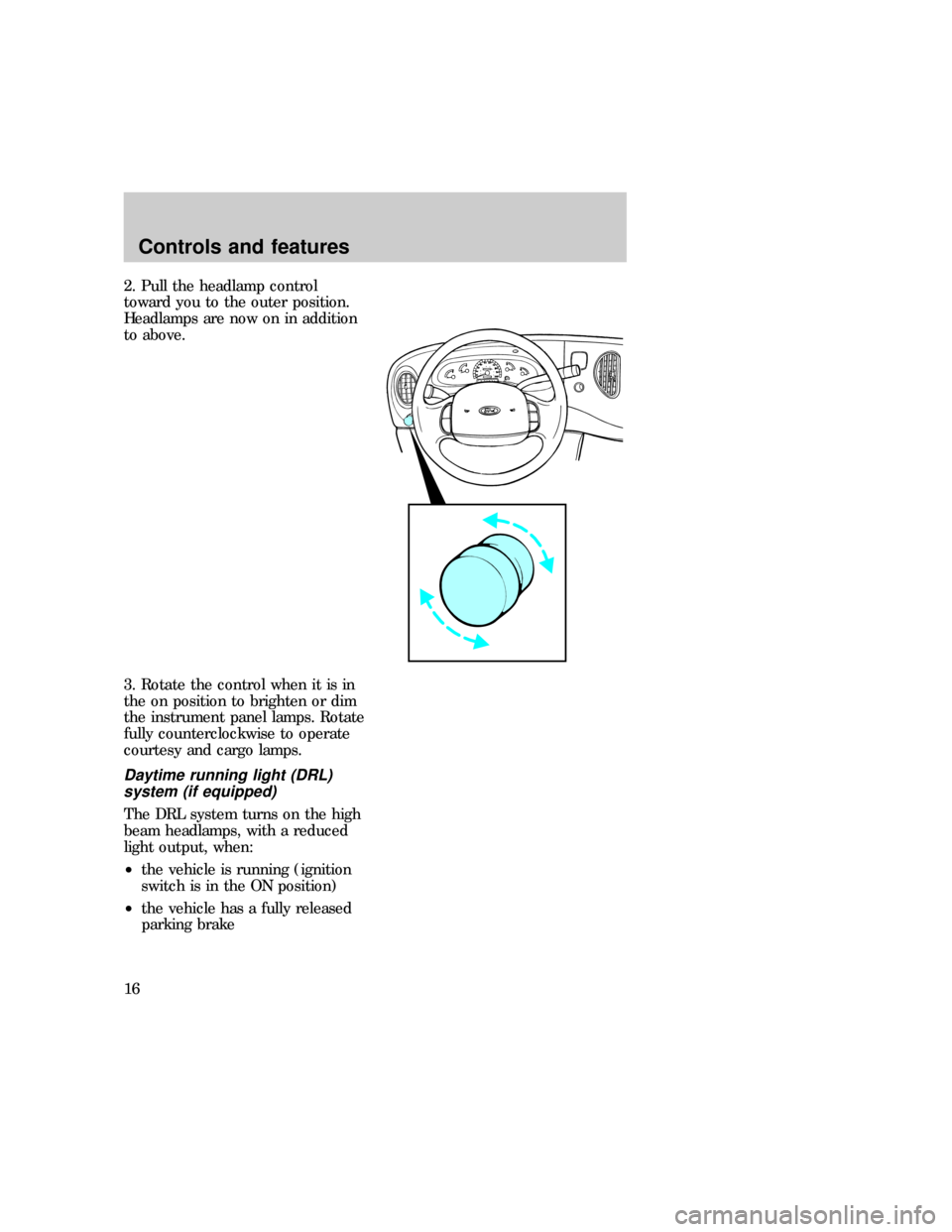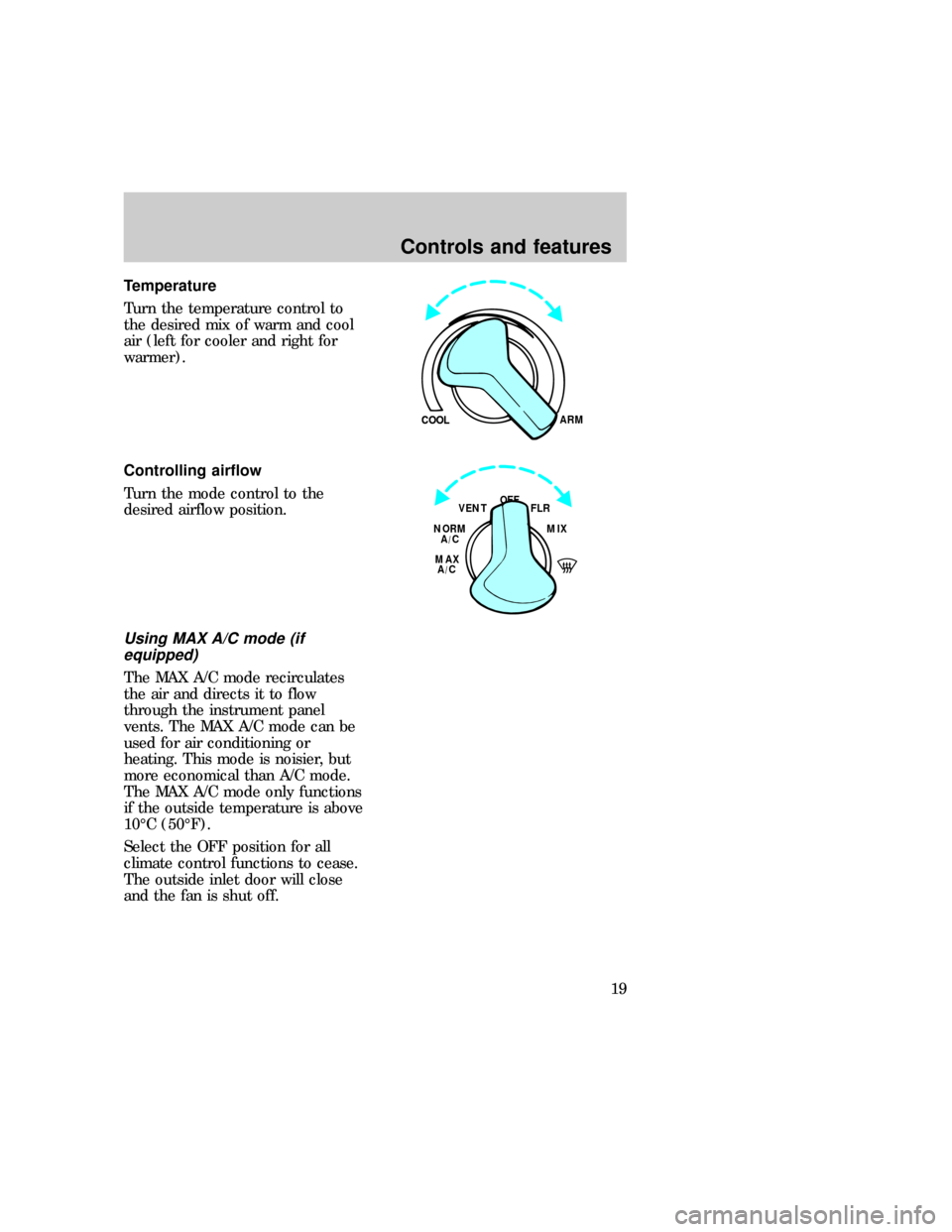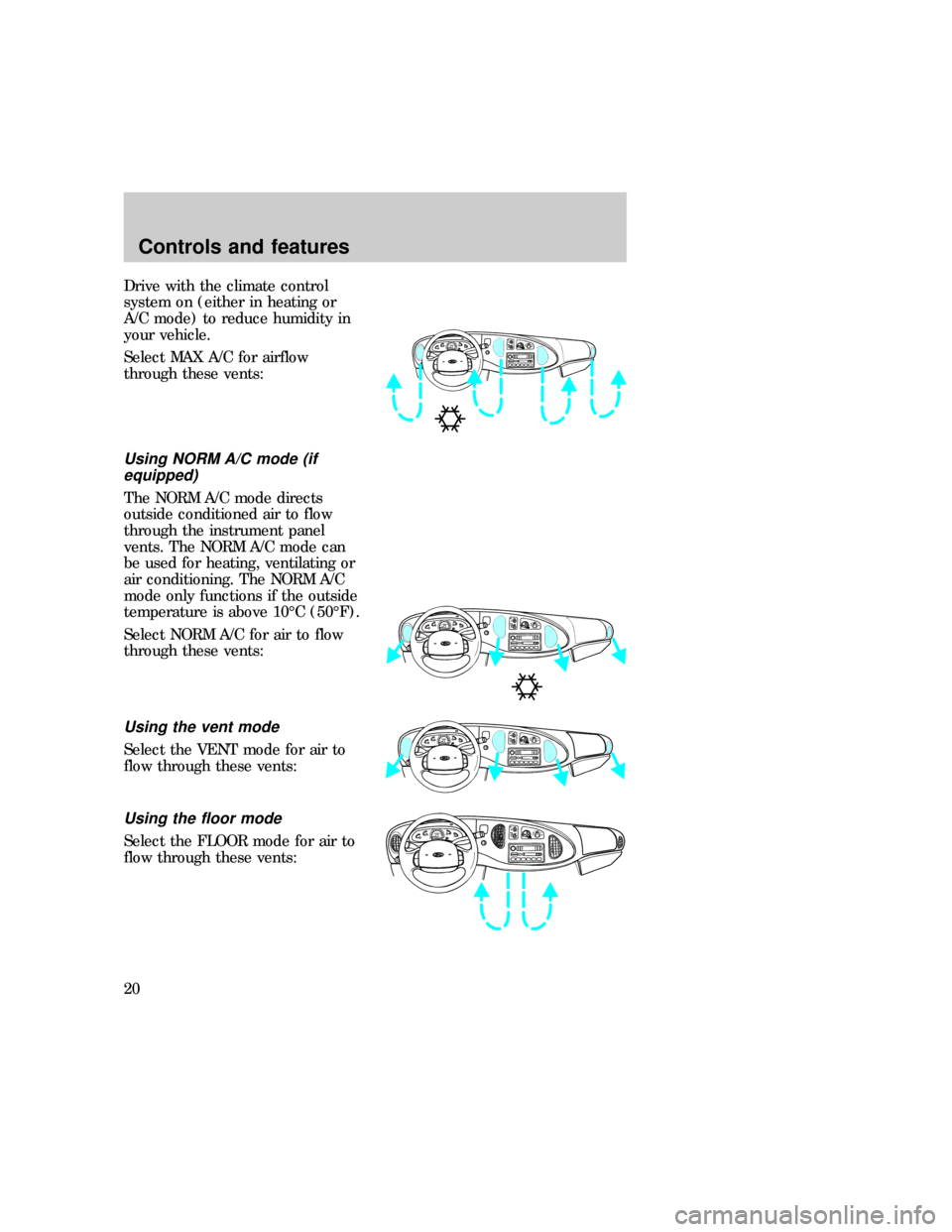FORD E SERIES 1997 4.G User Guide
E SERIES 1997 4.G
FORD
FORD
https://www.carmanualsonline.info/img/11/4790/w960_4790-0.png
FORD E SERIES 1997 4.G User Guide
Trending: jacking points, odometer, fuel pressure, horn, fuel fill door release, tire type, brake fluid
Page 11 of 192
WARNING CHIMES
Safety belt warning chime
For information on the safety belt
warning chime, refer to the
Seating and safety restraints
chapter.
Supplemental restraint system
(SRS) warning chime
For information on the SRS
warning chime, refer to the
Seating and safety restraints
chapter.
Key-in-ignition warning
chime/buzzer
Sounds when the key is left in the
ignition and the driver's door is
opened.
Headlamps on warning chime (if
equipped)
Sounds when the headlamps are
on, the ignition is off and the
driver's door is opened.
GAUGES
0 1020304050
60
70
80
90
10 0
20 km/h
406080
10 0
12 0
14 0
H
L
16 0
MPH
000000
0000
NORMAL
18
8NORMALFH
C
E
NORMAL
com_safety_chime.01
com_srs_chime.01
eco_key_chime
eco_headlamps_chime
eco_gauges
com_speedometer.01
Instrumentation
11
Page 12 of 192
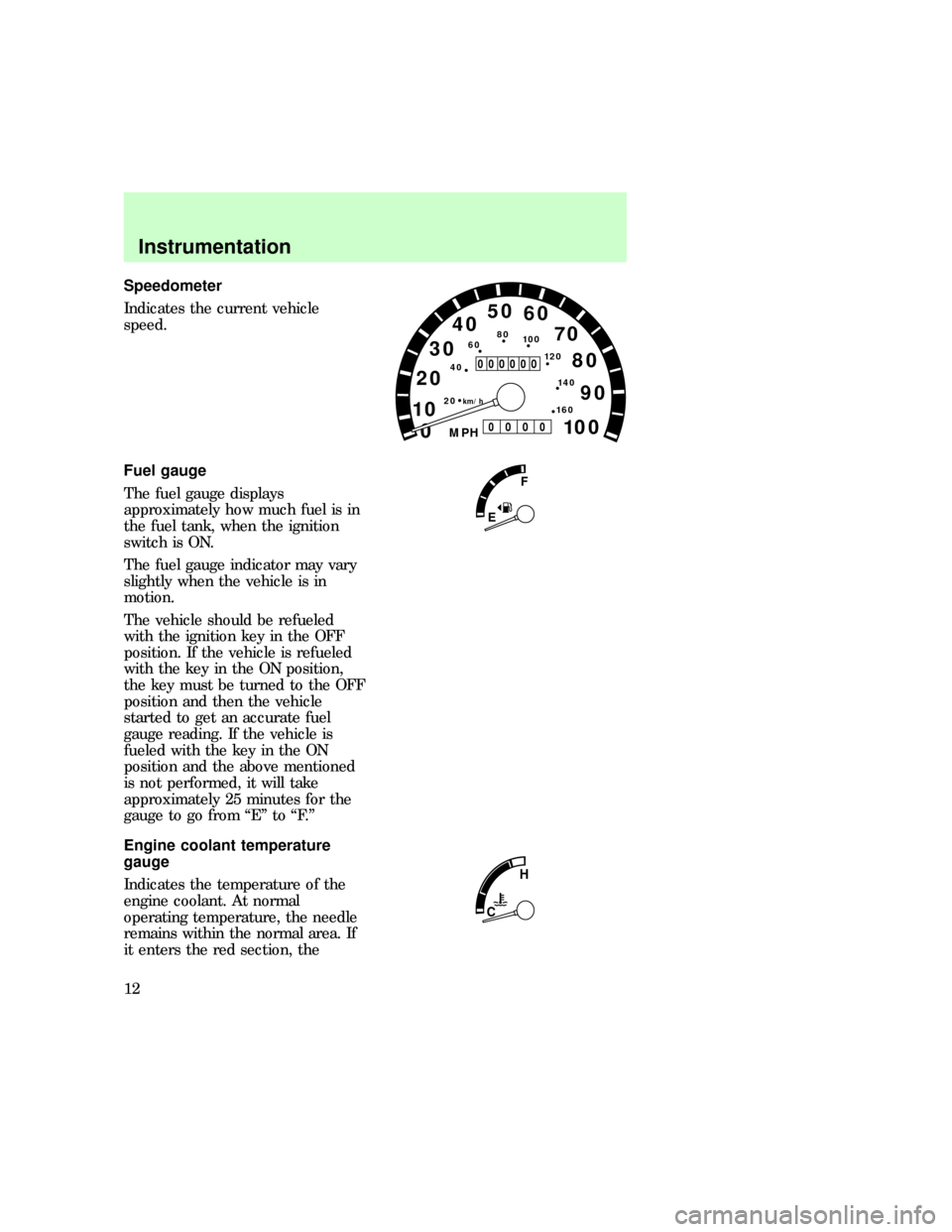
Speedometer
Indicates the current vehicle
speed.
Fuel gauge
The fuel gauge displays
approximately how much fuel is in
the fuel tank, when the ignition
switch is ON.
The fuel gauge indicator may vary
slightly when the vehicle is in
motion.
The vehicle should be refueled
with the ignition key in the OFF
position. If the vehicle is refueled
with the key in the ON position,
the key must be turned to the OFF
position and then the vehicle
started to get an accurate fuel
gauge reading. If the vehicle is
fueled with the key in the ON
position and the above mentioned
is not performed, it will take
approximately 25 minutes for the
gauge to go from ªEº to ªF.º
Engine coolant temperature
gauge
Indicates the temperature of the
engine coolant. At normal
operating temperature, the needle
remains within the normal area. If
it enters the red section, the
0 1020304050
60
70
80
90
10 0
20 km/h
406080
10 0
12 0
14 0
16 0
MPH
000000
0000
F
E
H
C
eco_fuel_gauage
com_coolant_temperature.03
Instrumentation
12
Page 13 of 192
engine is overheating. Switch off
the ignition and let it cool. Refer to
Checking and adding engine
coolantin theMaintenance and
carechapter.
Engine oil pressure gauge
This shows the engine oil pressure
in the system. Sufficient pressure
exists as long as the needle
remains in the normal range.
If the gauge indicates constantly
low pressure at normal engine
speed, refer toChecking and
adding engine oilin the
Maintenance and carechapter. If
the gauge indicates a low pressure
and the engine oil level is correct,
switch off the engine immediately
and have your vehicle checked at
your dealership or by a qualified
technician.
Charging system gauge
If the pointer moves and stays
outside of the normal range, have
the vehicle's electrical system
checked as soon as safely possible.
Odometer
Registers the total kilometers
(mileage) of the vehicle.
H
L
18
8
20 km/h
406080
10 0
12 0
14 0
16 0
com_oil_pressure.03
com_voltage.01
com_odometer.01 com_trip_odometer.01
Instrumentation
13
Page 14 of 192
Trip odometer
Can register the kilometers
(mileage) of individual journeys.
To reset, depress the control.
0 1020304050
60
70
80
90
10 0
20 km/h
406080
10 0
12 0
14 0
16 0
MPH
000000
0000
Instrumentation
14
Page 15 of 192
INSTRUMENT PANEL
CONTROLS
Headlamp control
1. Pull the headlamp control
toward you to the first position.
Parking lamps, tail lamps, license
plate lamps and marker lamps are
now on.eco_panel_controls
eco_headlight_switch_operation
Controls and features
15
Page 16 of 192
2. Pull the headlamp control
toward you to the outer position.
Headlamps are now on in addition
to above.
3. Rotate the control when it is in
the on position to brighten or dim
the instrument panel lamps. Rotate
fully counterclockwise to operate
courtesy and cargo lamps.
Daytime running light (DRL)
system (if equipped)
The DRL system turns on the high
beam headlamps, with a reduced
light output, when:
²the vehicle is running (ignition
switch is in the ON position)
²the vehicle has a fully released
parking brake
eco_headlight_daytime_running
Controls and features
16
Page 17 of 192
²the headlamp system is in the
OFF or park lamp position
Audio System
For information on the audio
system, refer to theAudio Guide.
Power point electrical outlet
The power point is a power source
for the operation of electrical
accessories.
Do not use the cigarette lighter in
place of the power point.
CLIMATE CONTROLS
Your vehicle has one of the
following climate control systems:
²Manual heating system
²Manual heating and air
conditioning system
In addition your vehicle may also
be equipped with a auxiliary heater
and air conditioning system.
In some modes, the systems
function similarly; in modes where
the systems do not functioneco_audio_system
eco_power_point eco_climate_controls
Controls and features
17
Page 18 of 192
similarly, the different functions
are noted.
Vents
Airflow from the vents may be
manually adjusted by moving the
horizontal control or vertically
adjusting the vent according to
your airflow preference.
Fan speed
Turn the fan speed control to the
desired speed.
FRONT
LOHI
eco_climate_controls_vents eco_climate_fan-speed
eco_climate_temperature
Controls and features
18
Page 19 of 192
Temperature
Turn the temperature control to
the desired mix of warm and cool
air (left for cooler and right for
warmer).
Controlling airflow
Turn the mode control to the
desired airflow position.
Using MAX A/C mode (if
equipped)
The MAX A/C mode recirculates
the air and directs it to flow
through the instrument panel
vents. The MAX A/C mode can be
used for air conditioning or
heating. This mode is noisier, but
more economical than A/C mode.
The MAX A/C mode only functions
if the outside temperature is above
10ÉC (50ÉF).
Select the OFF position for all
climate control functions to cease.
The outside inlet door will close
and the fan is shut off.
ARM COOL COOL
MAX
A C/
VENT
NORM
A C
/
OFF
FLR
MIX
eco_climate_airflow
eco_climate_max_acControls and features
19
Page 20 of 192
Drive with the climate control
system on (either in heating or
A/C mode) to reduce humidity in
your vehicle.
Select MAX A/C for airflow
through these vents:
Using NORM A/C mode (if
equipped)
The NORM A/C mode directs
outside conditioned air to flow
through the instrument panel
vents. The NORM A/C mode can
be used for heating, ventilating or
air conditioning. The NORM A/C
mode only functions if the outside
temperature is above 10ÉC (50ÉF).
Select NORM A/C for air to flow
through these vents:
Using the vent mode
Select the VENT mode for air to
flow through these vents:
Using the floor mode
Select the FLOOR mode for air to
flow through these vents:
eco_climate_ac
eco_climate_panel_air
eco_climate_floor_air
eco_climate_def-flr_air
Controls and features
20
Trending: climate control, mirror, turn signal bulb, check oil, catalytic converter, wheel, width


